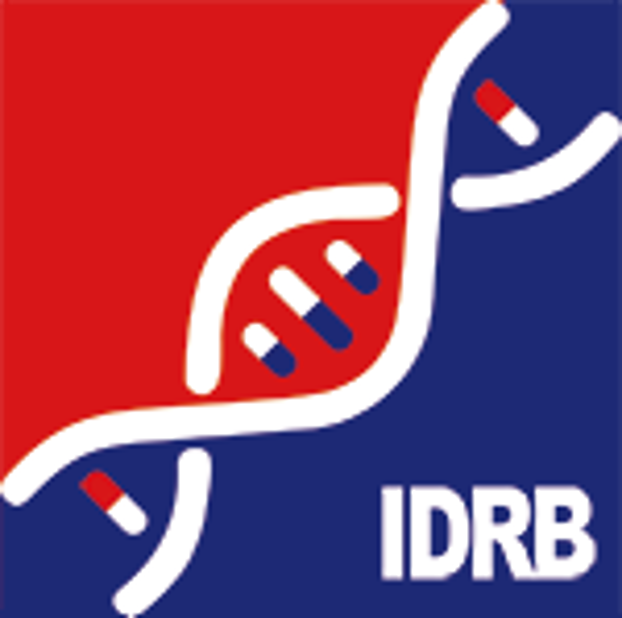Target Information
| Target General Infomation | |||||
|---|---|---|---|---|---|
| Target ID |
T13491
|
||||
| Former ID |
TTDS00430
|
||||
| Target Name |
Equilibrative nucleoside transporter 1
|
||||
| Gene Name |
SLC29A1
|
||||
| Synonyms |
ENT1; Equilibrative NBMPR-sensitive nucleoside transporter; Equilibrative nitrobenzylmercaptopurine riboside-sensitive nucleoside transporter; Nucleoside transporter 1; Nucleoside transporter, es-type; Solute carrier family 29 member 1; SLC29A1
|
||||
| Target Type |
Successful
|
||||
| Disease | Angina pectoris [ICD9: 413; ICD10: I20] | ||||
| Function |
Mediates both influx and efflux of nucleosides across the membrane (equilibrative transporter). It is sensitive to low concentrations of the inhibitor nitrobenzylmercaptopurine riboside (nbmpr) and is sodium-independent.
|
||||
| BioChemical Class |
Transmembrane protein
|
||||
| Target Validation |
T13491
|
||||
| UniProt ID | |||||
| Sequence |
MTTSHQPQDRYKAVWLIFFMLGLGTLLPWNFFMTATQYFTNRLDMSQNVSLVTAELSKDA
QASAAPAAPLPERNSLSAIFNNVMTLCAMLPLLLFTYLNSFLHQRIPQSVRILGSLVAIL LVFLITAILVKVQLDALPFFVITMIKIVLINSFGAILQGSLFGLAGLLPASYTAPIMSGQ GLAGFFASVAMICAIASGSELSESAFGYFITACAVIILTIICYLGLPRLEFYRYYQQLKL EGPGEQETKLDLISKGEEPRAGKEESGVSVSNSQPTNESHSIKAILKNISVLAFSVCFIF TITIGMFPAVTVEVKSSIAGSSTWERYFIPVSCFLTFNIFDWLGRSLTAVFMWPGKDSRW LPSLVLARLVFVPLLLLCNIKPRRYLTVVFEHDAWFIFFMAAFAFSNGYLASLCMCFGPK KVKPAEAETAGAIMAFFLCLGLALGAVFSFLFRAIV |
||||
| Drugs and Mode of Action | |||||
| Drug(s) | LIDOFLAZINE | Drug Info | Approved | Angina pectoris | [1] |
| Inhibitor | 6-(4-Nitro-benzylsulfanyl)-9-phenethyl-9H-purine | Drug Info | [2] | ||
| 9-Benzyl-6-(4-nitro-benzylsulfanyl)-9H-purine | Drug Info | [2] | |||
| Dilazep | Drug Info | [3] | |||
| KF24345 | Drug Info | [4] | |||
| LIDOFLAZINE | Drug Info | [5] | |||
| N6-CYCLOPENTYLADENOSINE | Drug Info | [6] | |||
| NBTGR | Drug Info | [7] | |||
| Nitrobenzylthioinosine | Drug Info | [8] | |||
| S6-nitrobenzyl mercaptopurine riboside | Drug Info | [9] | |||
| Modulator | [3H]nitrobenzylmercaptopurine ribonucleoside | Drug Info | [7] | ||
| Target Expression Profile (TEP) and Drug Resistance Mutation (DRM) | |||||
| DRM | DRM Info | ||||
| References | |||||
| REF 1 | Drugs@FDA. U.S. Food and Drug Administration. U.S. Department of Health & Human Services. 2015 | ||||
| REF 2 | J Med Chem. 2004 Oct 21;47(22):5441-50.Inhibition of nucleoside transport by new analogues of 4-nitrobenzylthioinosine: replacement of the ribose moiety by substituted benzyl groups. | ||||
| REF 3 | Residues Met89 and Ser160 in the human equilibrative nucleoside transporter 1 affect its affinity for adenosine, guanosine, S6-(4-nitrobenzyl)-mercaptopurine riboside, and dipyridamole. Mol Pharmacol. 2005 Mar;67(3):837-44. Epub 2004 Nov 19. | ||||
| REF 4 | Interaction of the novel adenosine uptake inhibitor 3-[1-(6,7-diethoxy-2-morpholinoquinazolin-4-yl)piperidin-4-yl]-1,6-dimethyl-2,4(1H,3H)-quinazolinedione hydrochloride (KF24345) with the es and ei subtypes of equilibrative nucleoside transporters. J Pharmacol Exp Ther. 2004 Mar;308(3):1083-93. Epub 2003 Nov 21. | ||||
| REF 5 | J Med Chem. 2007 Aug 9;50(16):3906-20. Epub 2007 Jul 18.Synthesis, flow cytometric evaluation, and identification of highly potent dipyridamole analogues as equilibrative nucleoside transporter 1 inhibitors. | ||||
| REF 6 | J Med Chem. 2005 Jan 13;48(1):321-9.Inhibition of nucleoside transport proteins by C8-alkylamine-substituted purines. | ||||
| REF 7 | (http://www.guidetopharmacology.org/) Nucleic Acids Res. 2015 Oct 12. pii: gkv1037. The IUPHAR/BPS Guide to PHARMACOLOGY in 2016: towards curated quantitative interactions between 1300 protein targets and 6000 ligands. (Target id: 1117). | ||||
| REF 8 | The role of human nucleoside transporters in uptake of 3'-deoxy-3'-fluorothymidine. Mol Pharmacol. 2008 Nov;74(5):1372-80. Epub 2008 Jul 31. | ||||
| REF 9 | Bioorg Med Chem Lett. 2009 Feb 1;19(3):917-21. Epub 2008 Dec 6.Synthesis and biological evaluation of phloridzin analogs as human concentrative nucleoside transporter 3 (hCNT3) inhibitors. | ||||
If You Find Any Error in Data or Bug in Web Service, Please Kindly Report It to Dr. Zhou and Dr. Zhang.

